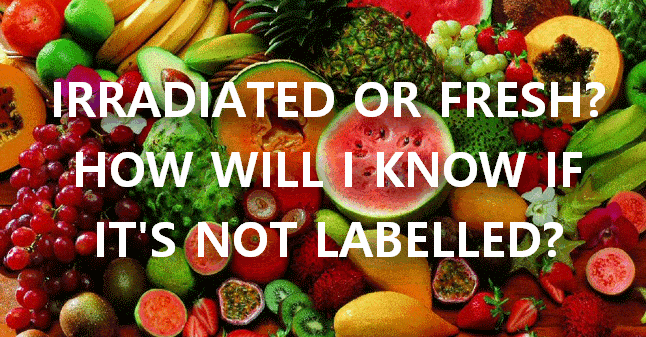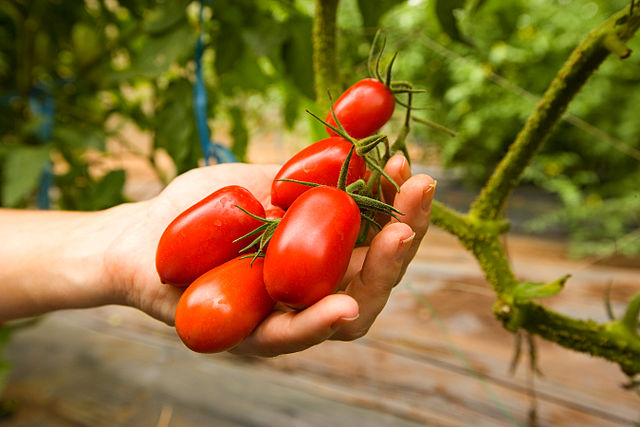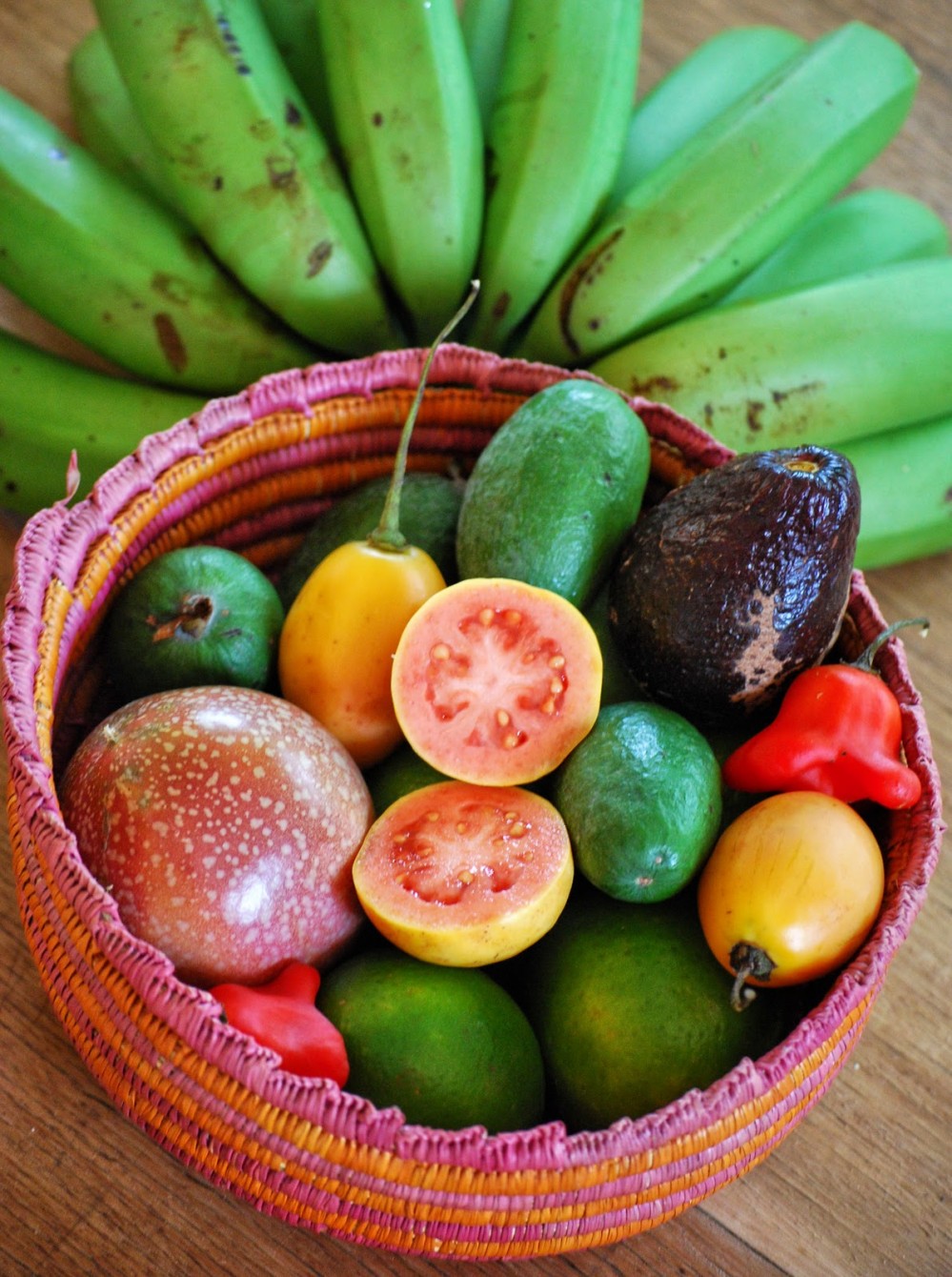Author Archives: Food Irradiation Watch
Information for Distribution
Here are campaign matrials and information relating to FSANZ proposal to irradiate raspberries and blueberries. Please diseminate widely.
Say NO to the Irradiation of Blueberries and Raspberries

Irradiated superfoods? Say no to the irradiation of blueberries and raspberries!
Once prohibited in Australia and New Zealand, irradiation is now being promoted here – primarily as a quarantine treatment – as a replacement for some post-harvest chemicals. Irradiation, however, brings its own risks to the table…
Recent approvals for commonly eaten fruits and vegetables significantly increase the proportion of irradiated foods in the average Australian and New Zealand diet. So far, Food Standards Australia New Zealand (FSANZ) has approved: herbs, herbal infusions, spices, tomatoes, capsicums, mangoes, pawpaws, mangosteens, carambolas, breadfruit, litchis, rambutans, longans, custard apples, apples, apricots, cherries, nectarines, peaches, plums, honey dews, rockmelons, strawberries, table grapes and zucchini and squash.
They now want to add blueberries and raspberries to that list.
The NSW government has made an Application to Food Standards Australia New Zealand (FSANZ) to irradiate blueberries and raspberries. These berries are considered by many to be “superfoods” and valued for their high antioxidant levels, anthocyanin and Vitamin C content.
Irradiation would see these tiny berries exposed to ionising radiation at doses ranging from 150 Gray (Gy) – 1 kGy. This is equivalent to exposing them to approximately 1.5 million – 10 million chest X-rays (calculated at the low end of chest X-ray exposure).
Ionising radiation changes the molecular structure of food, producing free-radicals, depleting antioxidants such as vitamin C and nutrition, and creating chemical compounds unique to radiation exposure. Numerous scientific studies have shown potential health risks associated with irradiating food. In fact, in 2008 -2009 up to one hundred Australian cats developed neurological disorders linked to the consumption of irradiated cat food. The risk to humans has not been ruled out.
Numerous alternatives exist
Despite this, in Australia and New Zealand, irradiation is being promoted as an “alternative” to certain pesticides, the uses of which have been restricted. The reality is, however, that fruit producers who use chemical pesticides – and opt to irradiate – will use irradiation on top of chemicals. Irradiation is not necessary for quarantine purposes of pest management as both radiation-free and chemical-free options exist. To protect their reputation and the Australian market, these “superfoods” should be produced to maximise their nutritional value and freshness. They should be grown as closely to nature and possible – with neither harmful pesticides nor irradiation.
Processed, not fresh
Once exposed to high levels of ionising radiation, raspberries and blueberries, prized for their natural goodness, can no longer be considered “fresh” – they will, in fact, be “processed. Changes made to fruits and vegetables as a result of processing with irradiation are substantial and significant – and cannot be discerned with our ordinary senses.
Indeed, the test for irradiation is the presence of “radiolytic products” and free radicals. FSANZ confirms: “Irradiation potentially causes both macro and micronutrient changes in foods, depending on the irradiation dose, the food’s composition and environmental conditions.”
Adulterated superfoods?
- In recognition that irradiation alters the nature of food, irradiation is regulated as a food additive in the US and irradiated food is labelled accordingly. The 1958 Food Additives Amendment describes irradiated food as “adulterated.” http://www.fda.gov/Food/IngredientsPackagingLabeling/IrradiatedFoodPackaging/default.htm
- In Australia Irradiation approvals are given under Food Standard 1.5.3; irradiation is regulated as a food processing technique. http://www.comlaw.gov.au/Details/F2009C00895
- Both the Queensland and Victorian government’s use phrases such as a “food preservation method” and a “processing and preservation” technique in explaining food irradiation. http://www.health.qld.gov.au/foodsafety/documents/fs-39-irradiation.pdf http://www.betterhealth.vic.gov.au/bhcv2/bhcarticles.nsf/pages/Food_irradiation
It is clear that irradiated food is not fresh – it is intentionally and significantly altered. The likely increased transport time coupled with the further processing of blueberries and raspberries will further diminish the nutritional value and appeal of these wonderful fruits.
Consumer nuclear industry
The irradiation industry in Australia and New Zealand is nuclear. All commercially operating irradiation facilities use gamma radiation from radioactive Cobalt-60 sourced from a nuclear reactor in Canada and involve the transport, use, storage and management of radioactive materials. The push to expand the list of irradiated foods supports and aims to legitimise the consumer face of the nuclear industry.
Labelling under threat
Finally, as the irradiation process is, in effect, invisible, labelling is the only mechanism by which a consumer can distinguish between irradiated and non-irradiated food. The mandatory labelling requirements for irradiated food in Australia and New Zealand are under review. It is clear that the industry is keen to increase the amount of food it irradiates and sees labelling as standing in the way to consumer acceptance. There is no assurance in this application that labelling requirements will remain. Irradiated food must be labelled “treated with radiation” or “irradiated –‘
Good food does not need irradiating!
The irradiation of blueberries and raspberries is unnecessary. The perceived pest control benefit to the farmers is outweighed by potential risks to consumers, the environment and the health-promoting nature of berriesl Please let FSANZ and your local food authorities know that you so NO! Together, we can keep irradiation food off our tables!
Saying NO!
Food regulations must pass through the Ministerial Council before becoming law. Each state has at least one state MP on the Council which means each of us have a representative on the Council who can say NO! Let the ministers and decision makers know how you feel about irradiation and labelling to help make a decision in favour of shoppers’ rights. Please make a submission via Food Standards Australia New Zealand and also send your message to your state, territory and federal reps. Information on how to submit, the Ministerial list and a sample letter are available on our TAKE ACTION page.
To get involved in the campaign to stop food irradiation and to ensure that all irradiated food is comprehensively labelled:
Email: foodirradiationwatch@yahoo.com.au
www.foodirradiationwatch.org
LIKE us on FB: https://www.facebook.com/notofoodirradiation/?fref=nf
Label All Irradiated Foods – Be Part of the Campaign!


Take action now!
- Go to the Do Gooder page to automatically email all relevant ministers.
- Make your own submission (instructions here) using our Sample Letter, or write your own. Use the Labelling Review ONLINE QUESTIONNAIRE sample responses document for ideas and sample answers.
Food irradiation is a cleanup technology used to cut costs and cover up industry’s poor management practices, including fruit fly control. On their behalf, our governments want to remove the present requirement to label so you are ignorant of irradiated foods and their impacts.
Irradiated fruits, vegetables, herbs and spices are all now labelled so you know they are processed, not fresh. But the food regulator (FSANZ) and the Food Forum (Ministers of all state, territory and NZ governments) fear you will not buy irradiated food if it is labelled.
FSANZ and the Food Forum already approved 24 fruits and vegetables for radiation energy exposure of at least 1.5 million chest x-rays. Apple, apricot, bread fruit, capsicum, carambola, cherry, custard apple, honeydew, litchi, longan, mango, mangosteen, nectarine, papaya (paw paw), peach, persimmon, plum, rambutan, rockmelon, scallopini, strawberry, table grape, tomato, zucchini (courgette) are approved. Blueberries and raspberries are next.
This ‘nuclear cooking’ controls fruit fly worms and extends shelf life. It can also neutralise but not remove some food contaminants. But some vitamins and nutrients are affected while, at some radiation doses, toxins and carcinogens may be created. Mystery still surrounds the irradiated feed that killed and maimed many Australian cats, and is now banned.
Most other countries require irradiated food labels, prescribe label wordings and are not reviewing their requirements. Aussies and Kiwis must not be kept in the dark.
To make a more personal comment to FSANZ email:submissions@foodstandards.gov.au by March 29, 2016. Use any format but mark your comments: “Submission on Rec 34: Review required labelling of irradiated foods”. More info: https://tinyurl.com/heba8a7
How To: Make a Submission to the Food Irradiation Labelling Review

*Click Here To Take Action Now! Do Gooder Campaign Page *
FSANZ has now published its “consultation paper” and is inviting public input through an online questionnaire. Submissions are due by March 29. You can read the official documents here:
http://www.foodstandards.gov.au/consumer/labelling/review/Pages/Labelling-review-recommendation-34irradiation-labelling.aspx
Making a submission is easy:
- You can read up on food irradiation and the labelling review process here, then
- You can use the Do Gooder Label all irradiated foods! campaign page to automatically forward your response to all relevant ministers. Use the sample letter or type your own personal response, and/or
- You can make your own submission from scratch using our Sample Letter (doc or pdf) and following these guidelines for preparing and sending, and/or
- You can make online submissions here. If making an online submission, you can use this document to review sample answers to the 24 questions
Please take the time to fill out the Do Gooder page. Feel free to use the sample letter in your comment in whole or part. If sending your own submission, also send a copy to your state or territory’s representative on the Food Ministerial Council (contact details can be found below). Each state or territory’s representative has the power to approve or block regulatory decisions.
Below are some points you might want to include:
- Despite their appearance, irradiated fruits and vegetables are processed, not fresh.
- As irradiation is invisible, without labelling, consumers will have no way to discern whether or not a product has been irradiated. Consumers will be misled into believing irradiated food is fresh or unprocessed.
- Consumers have strong opinions on irradiated produce and expect it to be labelled.
- Irradiation is still a new technology with a limited history of safe use in the human food supply.
- Removal of labelling will disadvantage non-irradiating producers and people who choose to eat irradiation-free.
- FSANZ and food producers are aware of consumer resistance to irradiated food.
- Removing labelling to boost sales of irradiated food would be deceitful.
- Australian & New Zealand labelling requirements already fall short of global standards.
- Labelling requirements should be strengthened to meet global standards & address community concern. At a minimum, labelling should include prescribed words: “irradiated” or “treated with irradiation”
- FSANZ should not be considering regulatory changes to intentionally decrease public awareness about an issue.
These articles provide a comprehensive overview of the issues listed above:
- The Facts on Food Irradiation and Labelling – Why You Should Be Concerned
- The 10 Facts You Should Know About Food Irradiation
Your submission should include:
- the number or name of the application or proposal: Labelling review recommendation 34 – irradiation labelling
- your name and contact details including: position, address, telephone number, fax and email address
- for organisations, the level at which the submission was authorised.
Where to send your submission:
Send your letter/submission to: submissions@foodstandards.gov.au.
In Subject line, please write: RE: Labelling review recommendation 34 – irradiation labelling
It’s strongly advisable to also send your submission to the federal and relevant state ministers who sit on the Food Regulations Ministerial Council federal and your relevant state Ministers. See below for a complete listing and contact details.
Food regulations Ministerial Council – Complete address list
Food regulations must pass through the Ministerial Council before becoming law. Each state has at least one STATE MP on the Council. Let the ministers and decision makers know how you feel about irradiation labeling to help make a decision in favour of shoppers’ rights. Please send your message to your state or territory’s members as well as federal reps.
Membership of the Australia and New Zealand Ministerial Forum on Food Regulation (the Forum) Membership of the Forum comprises a Minister from New Zealand and Health Ministers from Australian States and Territories, the Australian Government, as well as other Ministers from related portfolios (Primary Industries, Consumer Affairs etc) where these have been nominated by their jurisdictions. This ensures a whole-of-food chain approach to food regulation.
Australian Government:
Senator the Hon Fiona Nash MP
Assistant Minister for Health Federal
PO Box 6100, Senate Parliament House,
Canberra ACT 2600
minister.nash@health.gov.au
Hon Barnaby Joyce, MP
Minister for Agriculture
PO Box 6022, House of Representatives
Parliament House Canberra, ACT 2600
minister@maff.gov.au
New Zealand:
Hon Jo Goodhew
Minister for Food Safety
Private Bag 18888
Parliament Buildings
Wellington 6160
jo.goodhew@parliament.govt.nz
ACT:
Mr Simon Corbell
Minister for Health
ACT Legislative Assembly
GPO Box 1020
Canberra, ACT 2601
P: (02) 6205 0000
E: corbell@act.gov.au
NSW:
The Hon Niall Blair, MLC
Minister for Primary Industries
Parliament House
Macquarie Street
Sydney NSW 2000
P: (02) 9230 2467
E: niall.blair@parliament.nsw.gov.au
Mrs Jillian Skinner, MP
Minister for Health
PO Box 5341, Sydney NSW 2001
office@skinner.minister.nsw.gov.au
NT:
Lead Minister:
The Hon John Elferink, MLA
Minister for Health
GPO Box 3146
Darwin NT 0801
Telephone: 08 8928 6615
Email: Minister.Elferink@nt.gov.au
QLD:
Lead Minister:
The Hon Cameron Dick, MP
Minister for Health
Level 19, State Health Building
147-163 Charlotte Street
BRISBANE QLD 4000
Phone: (07) 3035 6100
Email: health@ministerial.qld.gov.au
Email: Woodridge@parliament.qld.gov.au
The Hon Leanne Donaldson, MP
Minister for Agriculture and Fisheries
Level 8, Primary Industries Building, 80 Ann Street
BRISBANE QLD 4000
Phone: (07) 3719 7560
Email: agriculture@ministerial.qld.gov.au
E: Bundaberg@parliament.qld.gov.au
Useful all Qld members mailing lists:
https://www.parliament.qld.gov.au/members/current/mailing-lists
SA:
Hon Jack Snelling, MP
Minister for Health and Ageing
PO Box 2555 Adelaide SA 5001
minister.health@health.sa.gov.au
Hon Leon Bignell, MP
Minister for Agriculture, Food and Fisheries
PO Box 1671 Adelaide SA 5001
minister.bignell@sa.gov.au
TAS:
Hon Michael Ferguson, MP
Minister for Health
Level 4, Reserve Bank Building
111 Macquarie Street, Hobart 7000
michael.ferguson@parliament.tas.gov.ua
VIC:
The Hon Jill Hennessy, MP
Minister for Health
Level 22, 50 Lonsdale Street
Melbourne, VIC 3000
Phone: (03) 9096 8561
Email: minister.health@health.vic.gov.au
Email: jill.hennessy@parliament.vic.gov.au
The Hon Jaala Pulford, MLC
Minister for Agriculture
Level 16, 8 Nicholson Street
East Melbourne, VIC 3002
Phone (03) 9637 9940
Email jaala.pulford@parliament.vic.gov.au
WA:
Hon Dr Kim Hames, MLA MBBS, JP
Minister for Health
PO Box 5551 Falcon WA 6210
kim.hames@mp.wa.gov.au
Hon Ken Baston, MLC
Minister for Agriculture and Food
PO Box 1452, Broome WA 6725
ken.baston@mp.wa.gov.au
Australian Local Government Association:
Mayor Troy Pickard
President
City of Joondalup
90 Boas Avenue Joondalup WA 6027
T: 08 9400 4450
Email: troy.pickard@joondalup.wa.gov.au
To get involved in the campaign to ensure that irradiated food is labelled:
Email: foodirradiationwatch@yahoo.com.au
Website: www.foodirradiationwatch.org
LIKE us on FB: https://www.facebook.com/notofoodirradiation/?fref=nf
Food Regulations Ministerial Council – Complete Address List
Food regulations must pass through the Ministerial Council before becoming law. Each state has at least one state MP on the Council. Let the ministers and decision makers know how you feel about irradiation labeling to help make a decision in favour of shoppers’ rights. Please send your message to your state or territory’s members as well as federal reps.
Membership of the Australia and New Zealand Ministerial Forum on Food Regulation (the Forum) Membership of the Forum comprises a Minister from New Zealand and Health Ministers from Australian States and Territories, the Australian Government, as well as other Ministers from related portfolios (Primary Industries, Consumer Affairs etc) where these have been nominated by their jurisdictions. This ensures a whole-of-food chain approach to food regulation.
Australian Government:
Senator the Hon Fiona Nash MP
Assistant Minister for Health Federal
PO Box 6100, Senate Parliament House,
Canberra ACT 2600
minister.nash@health.gov.au
Hon Barnaby Joyce, MP
Minister for Agriculture
PO Box 6022, House of Representatives
Parliament House Canberra, ACT 2600
minister@maff.gov.au
New Zealand:
Hon Jo Goodhew
Minister for Food Safety
Private Bag 18888
Parliament Buildings
Wellington 6160
jo.goodhew@parliament.govt.nz
ACT:
Mr Simon Corbell
Minister for Health
ACT Legislative Assembly
GPO Box 1020
Canberra, ACT 2601
P: (02) 6205 0000
E: corbell@act.gov.au
NSW:
The Hon Niall Blair, MLC
Minister for Primary Industries
Parliament House
Macquarie Street
Sydney NSW 2000
P: (02) 9230 2467
E: niall.blair@parliament.nsw.gov.au
Mrs Jillian Skinner, MP
Minister for Health
PO Box 5341, Sydney NSW 2001
office@skinner.minister.nsw.gov.au
NT:
Lead Minister:
The Hon John Elferink, MLA
Minister for Health
GPO Box 3146
Darwin NT 0801
Telephone: 08 8928 6615
Email: Minister.Elferink@nt.gov.au
QLD:
Lead Minister:
The Hon Cameron Dick, MP
Minister for Health
Level 19, State Health Building
147-163 Charlotte Street
BRISBANE QLD 4000
Phone: (07) 3035 6100
Email: health@ministerial.qld.gov.au
Email: Woodridge@parliament.qld.gov.au
The Hon Leanne Donaldson, MP
Minister for Agriculture and Fisheries
Level 8, Primary Industries Building, 80 Ann Street
BRISBANE QLD 4000
Phone: (07) 3719 7560
Email: agriculture@ministerial.qld.gov.au
E: Bundaberg@parliament.qld.gov.au
Useful all Qld members mailing lists:
https://www.parliament.qld.gov.au/members/current/mailing-lists
SA:
Hon Jack Snelling, MP
Minister for Health and Ageing
PO Box 2555 Adelaide SA 5001
minister.health@health.sa.gov.au
Hon Leon Bignell, MP
Minister for Agriculture, Food and Fisheries
PO Box 1671 Adelaide SA 5001
minister.bignell@sa.gov.au
TAS:
Hon Michael Ferguson, MP
Minister for Health
Level 4, Reserve Bank Building
111 Macquarie Street, Hobart 7000
michael.ferguson@parliament.tas.gov.ua
VIC:
The Hon Jill Hennessy, MP
Minister for Health
Level 22, 50 Lonsdale Street
Melbourne, VIC 3000
Phone: (03) 9096 8561
Email: minister.health@health.vic.gov.au
Email: jill.hennessy@parliament.vic.gov.au
The Hon Jaala Pulford, MLC
Minister for Agriculture
Level 16, 8 Nicholson Street
East Melbourne, VIC 3002
Phone (03) 9637 9940
Email jaala.pulford@parliament.vic.gov.au
WA:
Hon Dr Kim Hames, MLA MBBS, JP
Minister for Health
PO Box 5551 Falcon WA 6210
kim.hames@mp.wa.gov.au
Hon Ken Baston, MLC
Minister for Agriculture and Food
PO Box 1452, Broome WA 6725
ken.baston@mp.wa.gov.au
Australian Local Government Association:
Mayor Troy Pickard
President
City of Joondalup
90 Boas Avenue Joondalup WA 6027
T: 08 9400 4450
Email: troy.pickard@joondalup.wa.gov.au
Unlabelled Irradiated ‘fresh’ fruits and vegetables: False, Misleading and Deceptive


Fresh Tomatoes.
We have been advised that on January 18 FSANZ will release the “Consulatation Paper” in response to Blewitt Recommendation 43 for the “review” of mandatory labelling of irradiated foods. We expect that the public will have until mid-March to respond to this paper.
We hope that in the spirit of the words “consultation” and “review”, the discussion paper will present more than the industry-driven case for removing mandatory labelling requirements and include: 1) Maintaining the status quo (labelling requirements which we feel could be improved) and 2) Improving labelling (to include such things prescribed wording for irradiation labelling).
Our call for comprehensive labelling should in no way be taken as support for food irradiation. It is driven by the understanding that labelling is the only means by which a member of the public can be informed about irradiation and therefore must be in place as long as irradiation is legal, to ensure that the public can make informed decisions about what they eat.
Recent approvals for the irradiation of apples, apricots, cherries, nectarines, peaches, plums, honeydews, rockmelons, strawberries, table grapes and zucchini/squash. have significantly increased the proportion of irradiated foods in the average Australian and New Zealand diet, increasing the need for strong labelling laws. FSANZ is currently processing an application for the irradiation of blueberries and raspberries.
Below are some key reasons to keep irradiated foods labelled:
1. Despite their appearance, irradiated fruits and vegetables are processed, not fresh.
2. Without Labelling, irradiated fruit and vegetables would be implicitly misrepresented as fresh -products of the irradiation process are undetectable to consumers without labelling and consumers naturally expect such products to be labelled
3. Consumers have strong opinions on irradiated produce as it is a new technology with a limited history of safe use in the human food supply
4. Food producers have raised their own queries about the removal of labelling, as it will disadvantage non-irradiating producers
5. The irradiation of fruits and vegetables typically involves their exposure to the energy equivalent of between 1.5 and 10 million x-rays. When used as a fruit fly larvae treatment, food irradiation also extends shelf life, sanitises, and alters the nutritional value of the treated foods. The substantial and significant changes made to fruits and vegetables as a result of processing with irradiation cannot be discerned with our ordinary senses. Thus, consumers could no longer rely on taste, smell, texture or appearance to exercise their preference for fresh produce, if irradiation labelling were removed.
We therefore assert that the removal of labelling from irradiated fruits and vegetables will create a situation where the public will be led to false, misleading and deceptive conclusions as to the nature of these foods, also impacting on their right to make well-informed food buying decisions that potentially impact on their diet and health.
We will share the consultation paper and our analysis of it as soon as possible. Please get ready to let your state and federal health minister know that if food is going to be irradiated, it must be labelled!
– the Food Irradiation Watch team.
RSPCA Australia Supports Ban on Irradiated Pet Foods
![Cat eating a meal Carsondelake [CC BY-SA 3.0 (http://creativecommons.org/licenses/by-sa/3.0)], via Wikimedia Commons](http://foodirradiationwatch.org/wp-content/uploads/2015/12/A_cat_eating_a_meal.jpg)
RSPCA Australia has supported a ban on irradiation of cat pet food and is opposed to pet food irradiation generally:
RSPCA Australia’s position is that pet food should not be irradiated. Currently there is a ban on the irradiation of imported cat food and we commend the Minister for implementing this ban. This ban followed scientific evidence and the recent ‘Orijen cats’ cases that showed an association between ingestion of irradiated imported cat food and severe neurological impairment, which in some cases was fatal. There is also a requirement that irradiated imported dog food be labelled ‘Must not be fed to cats’.
For more information, check out RSPCA Australia:
What is RSPCA Australia’s position on the irradiation of imported pet food products?
Research from Adelaide University Finds Food Labelling Inaquate
Nutritional information and ingredient lists on labelling are strongly regulated. However, claims of ethical standards are not regulated by the government. Free Range standards for example, do exist, however they are not regulated by government and one Free Range standard may mean quite a different thing to another Free Range standard.
Senior research associate Dr Heather Bray of Adelaide University said a recent study has used focus groups to better understand attitudes towards labelling.
“Things that at face value which may seem to be an ethical choice, we often found were more because people were thinking about taste or freshness and quality,” Dr Bray said.
“So these ideas that things marketed as having ethical claims tended to be better for a whole range of reasons that weren’t necessarily linked straight away to being better for the planet.
“Our research is really trying to understand what might motivate someone to make a so-called ethical choice, and what they thought they were doing by purchasing that product.”
Doctor Bray continued, “We saw that consumers were reducing this ethical logo into an idea that something is better or worse. So eventually it has to become a binary — you either buy or you don’t buy.”
“We do need to find better ways to engage people in conversations about how our food is produced, rather than just through labelling.
“I would like to see the labelling improved, but I think the assumption that what people will buy is representative of how they’re thinking about agriculture more broadly, is a bit narrow.
“We need to find other ways to drive the conversation around how we have our food produced now and into the future to make sure it is safe, nutritious, affordable and sustainable.”
AUDIO: ABC Rural News:
http://www.abc.net.au/news/2015-11-12/heather-bray-adelaide-uni-ethical-food-labelling/6935516
Revenge of the Irradiated Mangoes

What will we do with nuclear waste? Let’s put it in our food! Some unsuspecting fruit get a shocking surprise in this first attempt kitchen-table animation.
This short film was made ten years ago, but it’s a silly and relevant as ever.
Creative Commons License: Copyright 2012, Kim and Josh. This work is licensed under a Creative Commons License
